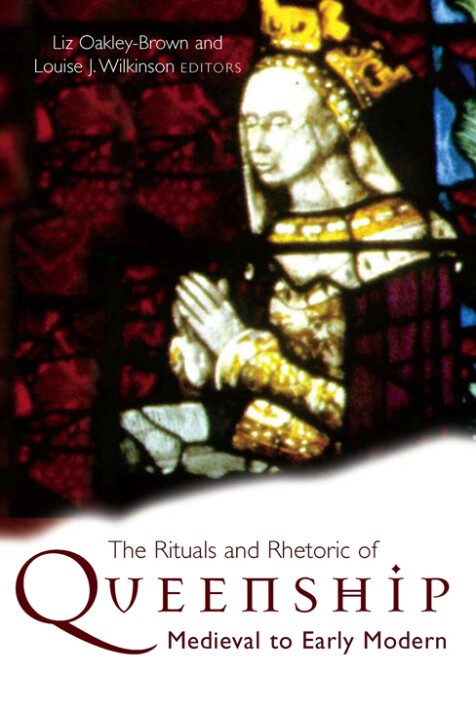The rituals and rhetoric of Queenship
Medieval to early modern
Liz Oakley-Brown & Louise J. Wilkinson, editors
‘[A] valuable collection on medieval and early modern queenship. The essays are of a uniformly high quality and make an important contribution to our current understanding of female magistracy in the pre-modern world … the book opens on a high note with the two essays on medieval queens. Louis J. Wilkinson’s superb essay on the marriage between Henry III’s sister Isabella of England and the Hohenstaufen emperor Frederick II adds depth and nuance to the general scholarly impression that royal brides mediated interdynastic relationships … In a volume that concentrates so much and so appropriately on royalty, two essays stand out for their exploration of Elizabeth’s relationship with the aristocracy and upper gentry. Kristin Bundesen traces the emotional and political ties that Elizabeth maintained throughout her life with the descendants of her mother’s sister, Mary Boleyn Carey. In one of the most intriguing essays in the volume, Jessica L. Maley argues that Anne Clifford, the fiercely independent Countess of Cumberland, imitated Elizabeth’s political, managerial and rhetorical strategies in establishing her authority over her hereditary lands. Oakley-Brown and Wilkinson have done a masterful job of assembling an array of new scholarly perspectives on the field of early modern queenship. The collection left me looking forward both to future work by each of the contributors and to future volumes from Four Courts Press', John Watkins, The Review of English Studies (May 2010).
‘This volume is another worthy addition to the field of queenship. The papers are well linked and generally well balanced … contains informative and intriguing papers which add to our knowledge of these fascinating women and demonstrate the continuing interdisciplinary development of the field', Elena Woodacre, Reviews in History online journal (July 2010).
‘These meticulously researched and carefully analyzed essays add considerably to our understanding of women as agents of diplomacy through marriage and cultural exchange … Oakley-Brown and Wilkinson have given scholars a considerable feast of new research, new sources, and theoretically rich analyses of late medieval and very early modern queens from and in the British Isles', Theresa Earenfight, Renaissance Quarterly (Summer 2010).
‘Liz Oakley-Brown and Louise J. Wilkinson have put together an impressive collection of essays on medieval and early modern queenship, examining the constraints to female power and the mechanics some queens used to overcome these barriers. The essays also explore the many ways medieval and early modern queens were depicted both in word and image … this collection has many thoughtful and innovative essays and will be of value to a wide range of readers. It introduces some less well-known queens and provides new insights on ones more widely written about', Carole Levin & Nathan J. Probasco, Journal of British Studies (July 2011).
‘… contributes a series of detailed portraits of both kinds of queen [queens consort and queens regnant] and challenges several preconceived notions of female rule and feminine power through rhetoric … provides a wealth of fascinating information and analysis regarding some very well-known female rulers, and some queens who have been marginalized by the process of time. All eighteen chapters are very clear and concise. The succinctly outline aims and intentions are carried throughout each piece … the three essays that consider medieval queens successfully elevate these women to positions of interest and shed light on their importance and role in royal ritual and rule … [essays] present a vivid tapestry of attitudes and sentiments regarding reigning queens, both Catholic and Protestant. This is an interesting and important volume that speaks to a number of current debates regarding the fitness of women to rule', Larissa Tracy, Eolas (2010).
‘The days in which historians mentioned queens only as political pawns or mothers are, fortunately, long gone. In this addition to the list of queenship studies, Oakley-Brown and Wilkinson present essays on the roles of English-born queens from the thirteenth to the seventeenth century', Reference & Research Book News (May 2010).

